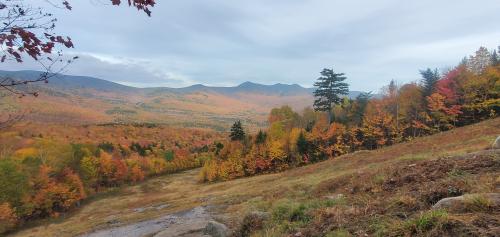White Mountains, New Hampshire Project Center - IQP

The White Mountains Project Center is a domestic, residential project center. Students complete their IQP in Grafton County during A term of their junior year. The Project Center’s mission is to facilitate environmental stewardship, beginning with the White Mountain National Forest.
In addition to completing their IQP, students participate in a Wilderness Ethics Certificate Program. The goal of this certificate is to increase student connection with nature and to help students become environmental stewards in whatever they do. To earn this certificate, developed in collaboration with World Trails Network and the Waterman Fund, students:
Participate in a full-day Leave No Trace Awareness training,
Regularly read and contribute to environmentally oriented discussion board questions,
Participate in regular fireside chats (around a campfire in the middle of the Sandwich Mountains) on the week's reading,
Volunteer with World Trails Network-Americas, the United States Forest Service, the Appalachian Mountain Club or New Hampshire State Parks, to repair or rebuild a trail,
Consult with the Cowasuck Band of the Penacook-Abenaki People to ensure their project incorporates the Indigenous perspective and is operating in respect to Indigenous principles; and lastly,
Participate in a reflective, solo-ish hike. (Please Note: the solo-ish hike is not required for IQP credit, but is required if students wish to earn the Wilderness Ethics Certificate).
Project sponsors include the United States Forest Service, the Appalachian Mountain Club, Hubbard Brook Research Foundation, World Trails Network: Hub for the Americas, Mount Washington Observatory and more.
Projects may include:
- Methods to protect the alpine zone
- Efforts to manage heavy traffic in fragile areas
- Development of educational material on the local ecology
- Impacts of climate change on the White Mountain National Forest
- Development of hiking trail documentation and virtual tours
- Development of education and outreach material related to responsible recreation
- Creation and implementation of exhibits at the Mount Washington Observatory